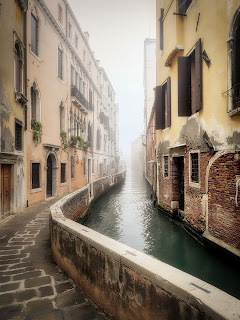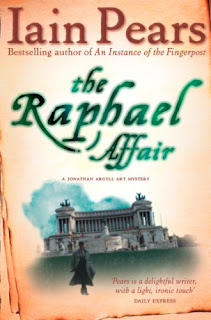Intriguing mystery played out in a setting of which we never tire
 |
| As a Venice resident, Philip Gwynne Jones gives his character local knowledge |
It was refreshing to read a mystery that has Venice as the backdrop and to have the city described from a new point of view. I have been an avid reader of Donna Leon’s Brunetti series over the years and Donna Leon is, of course, a famous ex-pat American resident of Venice. Philip Gwynne Jones, who was born in Swansea and grew up in south Wales, is now also lucky enough to be living there, working as a teacher, writer, and translator.
I’ve been visiting Venice regularly for more than 45 years and think I know the city well, but not in the same way that a local can know and portray it, of course. I enjoyed the author’s descriptions of squares and bridges as his viewpoint character, Nathan Sutherland, makes his way through the calli using routes to get to places that only a local would know, in the same way that Commissario Brunetti moves about in Donna Leon’s novels.
As a series character, I thought Nathan was very promising. He lives in an apartment on Via dei Assassini, where he makes a living as an English translator of DIY manuals. He also serves as the English Honorary Consul to Venice and does his best to help British tourists who get into difficulty while visiting La Serenissima.
This is an excellent device because it is entirely plausible that Nathan will have regular dealings with the police while trying to sort out people’s problems. It is also likely that he will have developed a friendship with an officer who he can call on for help when he is engaged in sleuthing.
Nathan is separated from his wife, who we eventually learn has left to take up a job in Scotland. He has an unfriendly cat called Gramsci, named after a former leader of the Italian Communist party, Antonio Gramsci, who stood up to Mussolini and was imprisoned by the Fascists for 20 years. To add further interest, Nathan also has an attractive Italian female friend, Federica, who is an art restorer.
 |
| The Venetian Game is the first of a series of detective novels |
The package turns out to hold a valuable antique prayer book illustrated by an Italian master and Nathan eventually finds he has been drawn into a deadly game of art theft being played by two elderly brothers who live in a palace on the Grand Canal.
Nathan is terrorised at the top of a high building, beaten up and nearly drowned in a canal, and forced to flee his apartment, taking Gramsci with him, and make his escape by vaporetto, all because of the package.
I found myself wondering about Nathan at this point. Why doesn’t he take the package to the police and go and stay somewhere else for a while? What makes him want to put his life at risk to solve the mystery? Is it because he’s exceptionally brave, or has an insatiable curiosity, or is determined to see justice done?
The Venetian Game was first published in 2017. As I said earlier, I was a bit late discovering the series. I am looking forward to reading the sequel, Vengeance in Venice, which was published in 2018, to find out exactly what motivates Nathan.
.png)
.jpg)
.jpg)



